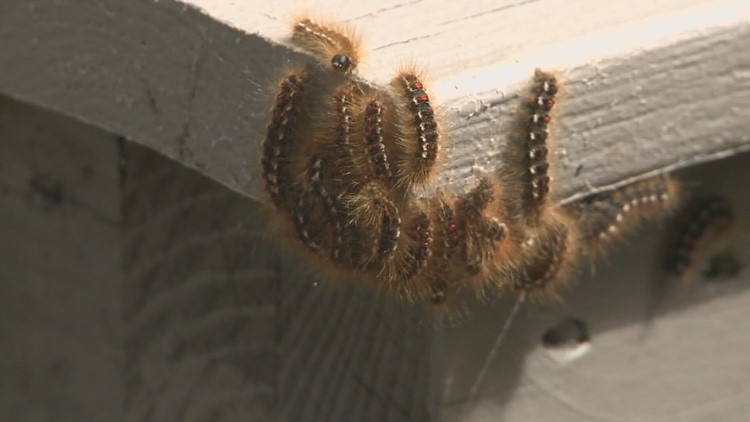MAINE, USA — The Maine Center for Disease Control and Prevention (Maine CDC), the Maine Forest Service (MFS), and 211 Maine have issued a reminder for residents and visitors of Maine to protect themselves from browntail moth hairs this fall.
Most Mainers are well versed in the pesky browntail moth caterpillars that shed tiny toxic hairs, but take note. Exposure can occur during outdoor fall activities.
According to a news release from the Maine Department of Health and Human Services, those toxic hairs can be stirred up during activities such as raking, mowing, and other yard work.
The caterpillar hairs can cause a skin rash similar to poison ivy. When the hairs are airborne and inhaled they can cause breathing trouble, according to the release. The hairs can remain toxic in the environment for up to three years, especially in dry or sheltered areas.
"The MFS found evidence of browntail moths in all Maine counties, with the majority of activity in southern and central Maine," the release stated.
Officials say most people affected by the hair develop a localized rash lasting for a few hours, or up to several days. However, for more sensitive individuals, the rash can be severe and last for weeks. The toxic hairs may also cause respiratory distress. Treatment for a rash or breathing problems caused by the browntail moth hairs focuses on relieving symptoms and eliminating further exposure.
To reduce exposure to browntail moth hairs:
- Stay informed about browntail moth hotspots by visiting the Interactive Browntail Moth Dashboard to see where MFS notes high activity. Then, be proactive, know the risks, take steps to protect yourself, and monitor your surroundings.
- When performing outdoor activities that may stir up caterpillar hairs:
- Aim for damp days or spray vegetation with water. Moisture helps keep the hairs from becoming airborne.
- Cover your face and any exposed skin by wearing a long-sleeved shirt, long pants, goggles, a respirator/dust mask, a hat, and a disposable coverall.
- Tightly secure clothing around the neck, wrists, and ankles.
- Avoid using leaf blowers in areas known to have infestations.
- Take cool showers and change clothes after outdoor activities in infested areas.
- Dry laundry inside to avoid getting hairs on clothing.
For more information:



